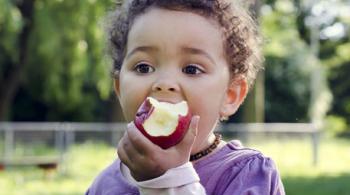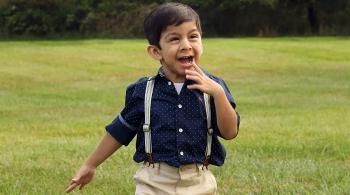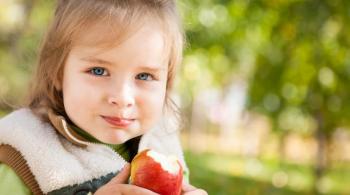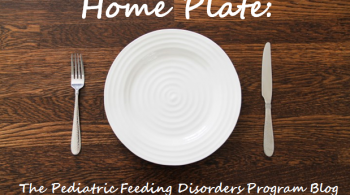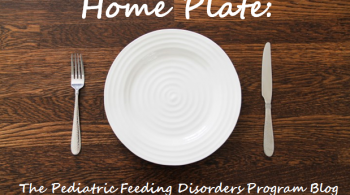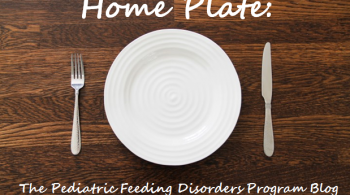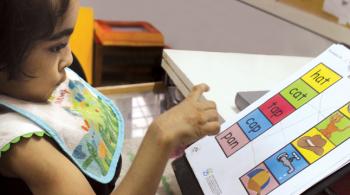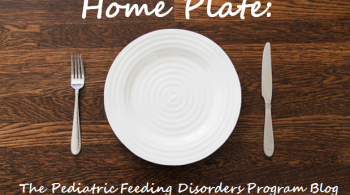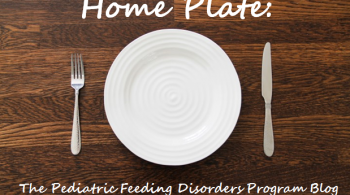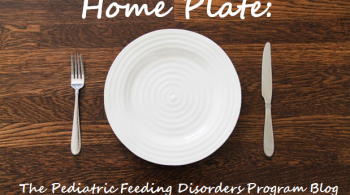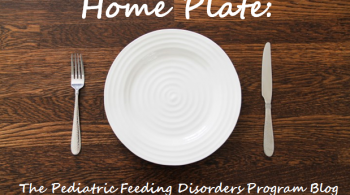Until now, our entries have focused on feeding issues in children and adolescents. Although feeding problems may become more apparent as your child gets older, it’s important to recognize that most of us have natural or “innate” eating skills at birth. Babies acquire feeding skills as they acquire other developmental skills that serve as the foundation for our eating habits for years to come. In this month’s post, we will discuss the typical development of oral motor skills and when parents should consider consulting with a professional.
According to Kennedy Krieger Occupational Therapists Donna Reigstad M.S. OTR/L, Katherine Stevens M.S. OTR/L and Speech Pathologist Katherine Ferguson M.S., CCC-SLP, the following general guidelines describe typical development. This has a wide range, with some individual differences. As infants progress from a liquid diet to one containing smooth or soft solids and eventually table foods, they gain oral motor strength in the lips, tongue and cheeks. With improved strength, oral motor coordination improves, which allows for a gradual progression of a somewhat complex sequence of skills.
General progression of oral motor/feeding skills are listed below. Please note that skill progression is dependent on a child’s physical health, motor skill development and cognition.
Birth through 3 months:
- Infants are born with the ability to coordinate sucking, swallowing and breathing
- Babies are typically fed in caregiver’s arms in a slightly reclined position, although there are many different positions where they can be fed effectively
- It is possible to see some liquid loss around the nipple
4-6 months:
- Infants may transition to sitting in a highchair at 6 months as their ability to sit unsupported improves
- Babies eat more efficiently from either a bottle or the breast
- Spoon feeding smooth-textured food is provided for oral motor practice, not nutritional reasons, around the age of 6 months
- Forward/backward tongue movement is typical with new spoon feeders, with food loss from the mouth common
- Mealtime becomes more social, with pauses to look at the feeder or the environment
6-9 months:
- Babies continue drinking from a bottle or the breast
- Spoon feeding continues
- Forward/backward tongue movement gradually resolves, with less food loss from the mouth
- Lip closure over the spoon emerges, which also results in less food loss from the mouth
- First finger foods are introduced
- Tiny pieces of food that dissolve or mash without chewing
- Involves some vertical movements of the jaw
- Tongue mashing (i.e., pushing the tongue along the roof of the mouth) to manage foods is common
- Children improve their ability to grasp food from using a whole hand grasp to a pincer grasp with the thumb opposed to the index and third finger
10-12 months:
- With chewing, infants learn to move food from the tongue to the gums or side teeth
- Infants can gradually manage increased textures including soft table foods like toast, waffles, soft fruits and vegetables
- Children can transition to spoon feeding with thicker purees, although they may have difficulty managing mixed textures (i.e., lumps of food floating in puree/stage 3 foods)
- Mealtime is social, and this is a great time to bring the highchair to the family table
- Child may begin to sip from a sippy cup or some other toddler covered cup
12-24 months
- Chewing increases in skill and strength and children gradually can manage finger foods with higher textures and spoon foods with mixed textures
- Children advance from playing with a toddler spoon, to self-feeding with increased efficiency. Expect a mess!
- Child may transition to an open cup with small amounts of liquids, although some spillage is expected
2 years+
- Children should be able to manage a wide variety of foods and textures
- Parents can offer them family food, although the foods need to be cut-up into small bites
- Children should manage the bites using their jaw, lips, and cheeks in a highly coordinated manner, although they may chew with their mouths open
- With drinking, children should be able to drink from any source, including an open cup, however, spilling would still be expected
Red flags that suggest consulting with an occupational therapist or speech and language pathologist include:
- The pediatrician is concerned about growth
- Meals or bottles take over 30 minutes
- Parents are concerned that a child is not meeting oral motor milestones
- Children are persistently coughing, choking or displaying cold-like symptoms with eating



